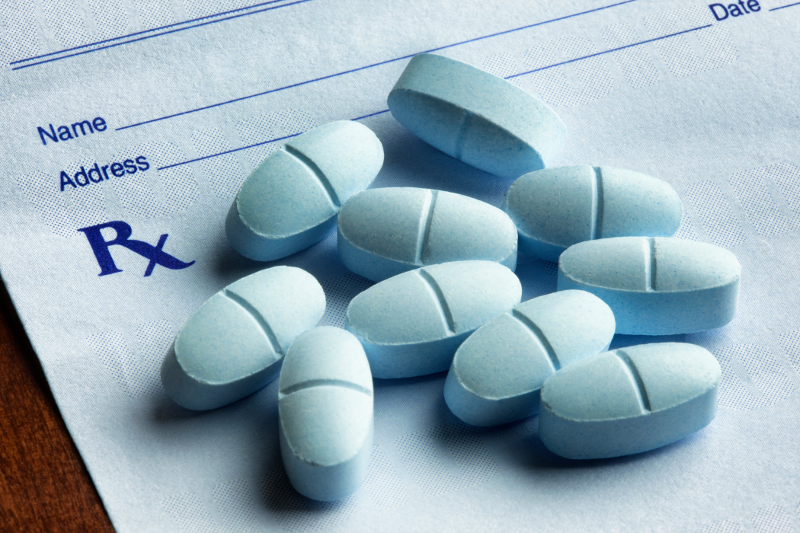
Arthritis Blog 1
Step 1: Make sure you have enough medication
Before you start packing, make sure you’ll have enough medication for each day, plus a little more in case your return is delayed. Don’t wait until the last minute to get your medication, since the pharmacy could be out of the medication or the doctor might be difficult to reach to write a new prescription.
See Medications for Breakthrough Pain
If you’re planning a longer trip, it may not be possible to get enough medication in advance to last for your trip. If this is the case, ask your doctor or pharmacist about the process for getting a new prescription filled at your destination.
People traveling out of state should keep in mind that state laws regulating opioid medication—also called narcotics or painkillers—vary widely. This may affect the number of doses dispensed for a new prescription or make filling a new prescription more complicated than at home.
See Opioid Medication Potential Risks and Complications
If you’ve just begun to take an opioid medication such as oxycodone (brand names OxyContin, Roxicodone, Percocet, Percodan, and others) you may be surprised by federal restrictions on obtaining more medication.
Federal law bars prescriptions on this type of medication from simply being refilled when you run out. Instead, you’ll need to have the doctor write a new prescription. If you fill the prescription at a chain pharmacy at home, using the same chain in another city may ease the process.
People traveling outside the United States are advised to check with the nearest U.S. consulate office or embassy in the country they are visiting to be sure the medication is allowed there.
Step 2: Keep pain medications in your carry-on luggage
If you’re flying, bring all medications with you in your carry-on bag, rather than in checked luggage, where it could be lost, stolen, or damaged.
Since some states require labeling of prescriptions, it’s best to keep medications in their original containers. Ask your pharmacy to provide a duplicate, labeled container when you fill a prescription so you can bring just the pills you need.
The Transportation Security Administration generally requires that liquids be placed in containers that are 3.4 ounces if they are in a carry-on bag. There are exceptions for medications, however. Reasonable amounts of medically required gels, aerosols, and liquids can exceed 3.4 ounces, but you’ll need to notify TSA officers about your medications as security screening begins and keep medications separate from other carry-on luggage during screening.
The U.S. Centers for Disease Control also advises:
- Packing a doctor’s note, written on the prescribing doctor’s stationery, explaining why the opioid or injectable medication is prescribed and why it is required while traveling.
- Keeping ice packs and frozen gel packs frozen solid at the time of TSA screening is ideal. If the ice becomes slushy, additional screening may be required. An instant cold pack, which is activated by shaking or squeezing, may be a better choice if you have a long trip.
See Ice Packs for Back Pain Relief
- Topical pain relief creams and gels are ordinarily considered liquids and limited to 3.4 ounces, but there is an exception if they are medically necessary. Be sure they are kept with the other medications you point out to the TSA officer.
- Making a list of your prescriptions on paper or in your cellphone’s notes—or emailing yourself the list—can be helpful if medication is lost, damaged, or stolen. Travelers going abroad might consider leaving a copy with a friend or relative at home, since time zone differences and lack of cellphone coverage may make communications difficult.
Watch Medications for Back Pain Video
A toll-free hotline, TSA Cares Help Line at 1-855-787-2227, has been established to help people with disabilities and medical conditions get their travel questions answered. The TSA recommends calling 72 hours before leaving so a wheelchair or other assistance can be arranged, if needed.
Travel inquiries of all kinds are answered by the TSA on Facebook’s messaging service at m.me/AskTSA.
During screening, if a TSA officer says a prescribed medication is not allowed, ask to speak with a TSA supervisor, and keep going up the chain of command, if necessary.
Step 3: Keep medications secure
Whether you’re staying in someone’s home or in a hotel, it’s best to be vigilant about risks of theft and misuse of your medication.
Keep these precautions in mind:
- Take your medication with you when you leave for the day, or lock it in the hotel safe.
- Avoid talking with others about what pain medications you take. Prescription medication abuse is widespread, and people you’d never suspect may be tempted to take some of your pills for themselves or to sell on the street.
- Keep medications secured and out of sight when staying at friends’ or relatives’ homes. In addition to the risk of abuse, opioids are strong medications that could poison a curious child or pet.
See Pain Killer Addiction Treatment
Before leaving your home, put any remaining medications out of sight, preferably in a safe or locked box.
Step 4: Think ahead to ease discomfort
Thinking about any special needs you’re likely to have can make for a smoother trip. Consider these strategies:
- Ask the doctor for anti-nausea medication if you are prone to motion sickness, since vomiting after you take a medication could make you miss a dose of pain medication.
- Sightseeing and other activities may lead to dehydration while on vacation, which can make opioid-related constipation worse. Pack some laxatives just in case, and drink plenty of liquids.
- Pack disposable hot patches for pain relief on the flight and afterward.
- Wheelchairs can be helpful for people who are not comfortable standing for long periods or walking the distances required in airports. When booking the flight, you can arrange to have a wheelchair take you to your departure gate and meet you when you land. An airline representative may also drive passengers who are unable to walk long distances to their departure gate or to the baggage claim area. If you did not request a wheelchair in advance, you can request one from an airline representative when you arrive at the airport.
- A lightweight cane that converts to a small seat may be useful for those not able to stand for long periods who do not want to use a wheelchair. These canes are sold at drugstores and medical supply stores.

